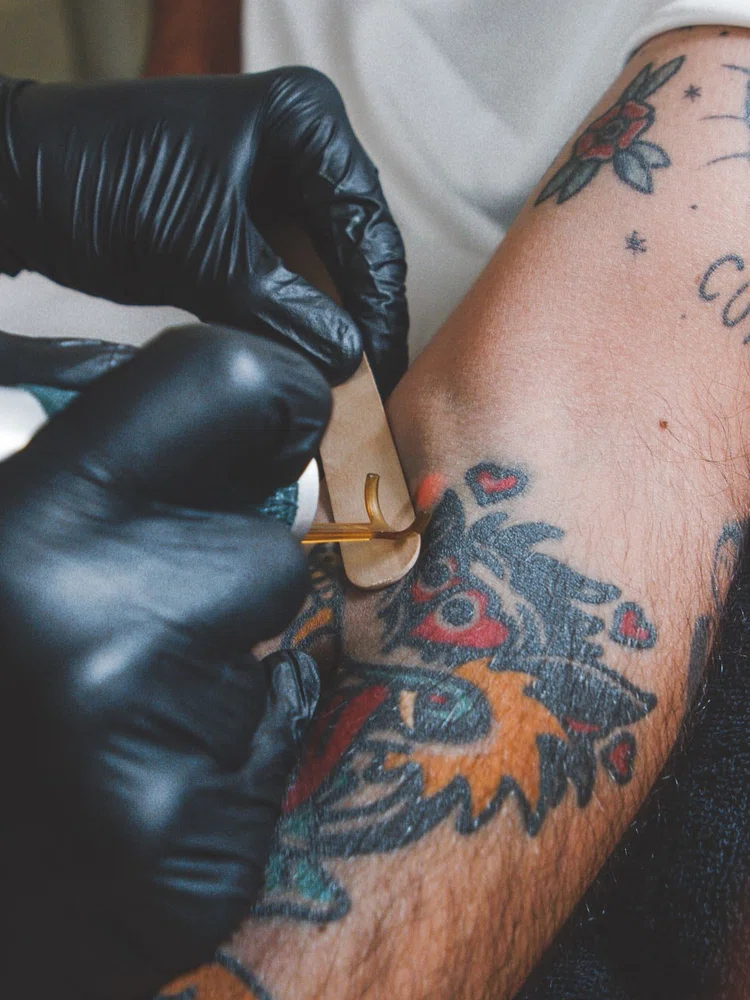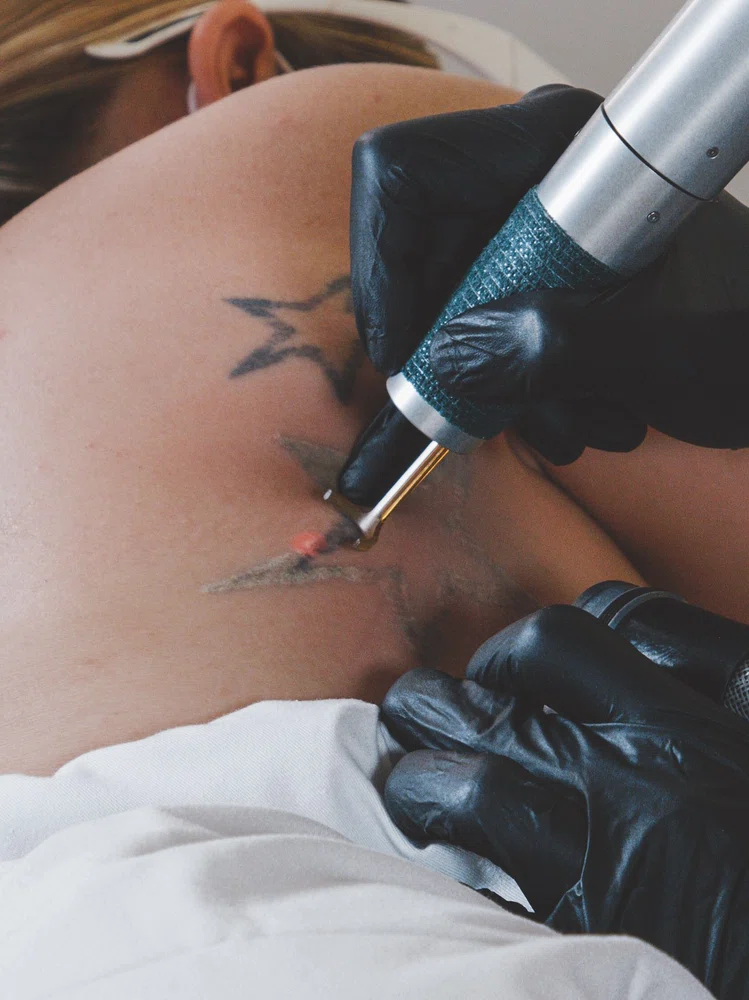Tattoo removal: laser technique
When the only solution is getting rid of our tattoo
24 May 2024
It could happen to us some day… we might have decided to have a tattoo without realizing how it would look on us, or for how long would it take to bore us; or maybe we’re just too in love to give a second thought on having his or her name in our skin…
So, what to do now?, let’s talk about your options.
There are many ways to remove a tattoo, such as surgery, dermabrasion, or the most commonly known and used: laser removal.
This technique consists of making little shots of light in variated frequencies that destroy and dissolve the pigment into particles, to then be able to expel them by the same body throughput lymphatic drainage.
Why would I have a tattoo erased?
An ex’s name or a poor design could be the case, as it sometimes happens with apprentices’ first jobs. But it could also derive from a matter of getting fed up or needing it for employment issues.
Many people get rejected in a job interview, and many employees are told to cover their tattooed body areas, which means a challenge and a necessity to go to a dermatology centre which specializes in these types of treatments.
Inks and its complications
The types of inks have an impact on the process. Oppositely to what people typically believe, black pigments are easier to remove than other colours such as red or green.
The lighter the pigment, the harder for the laser to detect them, and the slower the process.
In fact, in scenarios where white ink’s been applied, most probably that there would be more sessions needed than usual, and still have difficulty to completely remove it. The darker the inks, the more effective the treatment, as it detects the ink easier.
Besides, beyond colours, the types of inks used also determine the process, as so it happens with skin reaction to laser. Lighter skins usually have a faster respond than darker skins, where pigmentation is stronger.
But it varies depending on each person, so there’s not a closed conclusion about this.

When it comes to aged tattoos or made by more experimented artists, there’s also a difficulty to erase them. For instance, in the first case, ink has got in deeper with time, while in the second one, needles have also gone deeper than an amateur’s would typically do.
The deeper the ink, the harder for the laser to shred it.
Frequently asked questions
How many sessions are recommended?
People often believe that a sole session can completely remove a tattoo, but it’s not true. At first sight, behind the first session, the whitish effect could make it seem as it has been fully erased. But actually, the pigment rearranges itself and the tattoo re-emerges afterwards.
Changes can be perceived after a few days or even weeks. In some cases, and depending on the tattoo’s complexity and the amount of ink used, it could happen that after the first session it appears to have been erased significantly.
However, in reality, the process is slow, requires tons of patience, and it usually needs a minimum of 3 sessions, up to 15 or even more.
It’s crucial to have in mind that in-between sessions, there should be a margin of 4-6 weeks, as the skin needs it to regenerate itself and recover after the stress it’s been through.

Is it painful?
It’s not more painful than having a tattoo, still, it could cause discomfort, as ink is placed in the skin layer with most nerves, where heat, cold, and pain stimuli occur.
Should it be needful, many studios apply local anaesthesia through needless, depending on the patient’s pain threshold, who could also choose anaesthetic creams.
Do size and body areas interfere?
Any body-area allows tattoo removal, always considering that some zones could ache more than others, which is subject to the skin thickness. So, when it comes to delicate areas such as the face or near the eyelids, it would be logical to diminish intensities, thus, taking more time during the process.
Does it leave a scar or evidence of it?
Typically, the skin ends up damaged, so, pretending to perceive it as it was before being tattooed would not be realistic, as it signifies a tissue alteration.
Rarely, the wound healing could create keloids, which are skin layers overlapping and unable to regenerate, thus not allowing backtracking or more treatments on top.
On the other hand, laser affects the skin’s melanin and leaves a few sequels, either for hyperpigmentation (dark patches) or hypo-pigmentation (melanin loss or light patches).
But fortunately, they’re often temporary and after a few months, the skin can regenerate itself and come back to its original aspect almost entirely.
Can I have a new tattoo on the affected body area?
Yes, typically you could get a new tattoo several months after the last session, having in mind that the skin is not the same as before because it has suffered many damages since the first tattoo until the laser exposure.
In many instances, instead of removing it completely, they partially erase it to then have the possibility to tattoo again with fewer complications. This way, it could be useful for a cover-up, plus, it would be saving some sessions.

Do I have to take special cares?
Definitely, yes! Although, you should always consult your dermatologist first. As we know of cases in where skin has been damaged for not following specific recommendation. That’s why you shouldn’t expose the body area to the sun and always take care of the skin as in a wound.
Anything is possible with patience
If you want to remove a tattoo, you must know that it’s not an instant process, you’ll have to be extremely patient, and take what your dermatologist suggests during the aftercare to heart.
Consider yourself lucky, as nowadays laser removal is totally safe and brings optimums results.
Have you ever had to tattoo skin treated with laser?
Being aware of all the care and precautions a client needs based on their specific case is essential for achieving good results.
That's why our professional tattoo courses include firsthand advice to avoid mistakes and keep your clients satisfied.